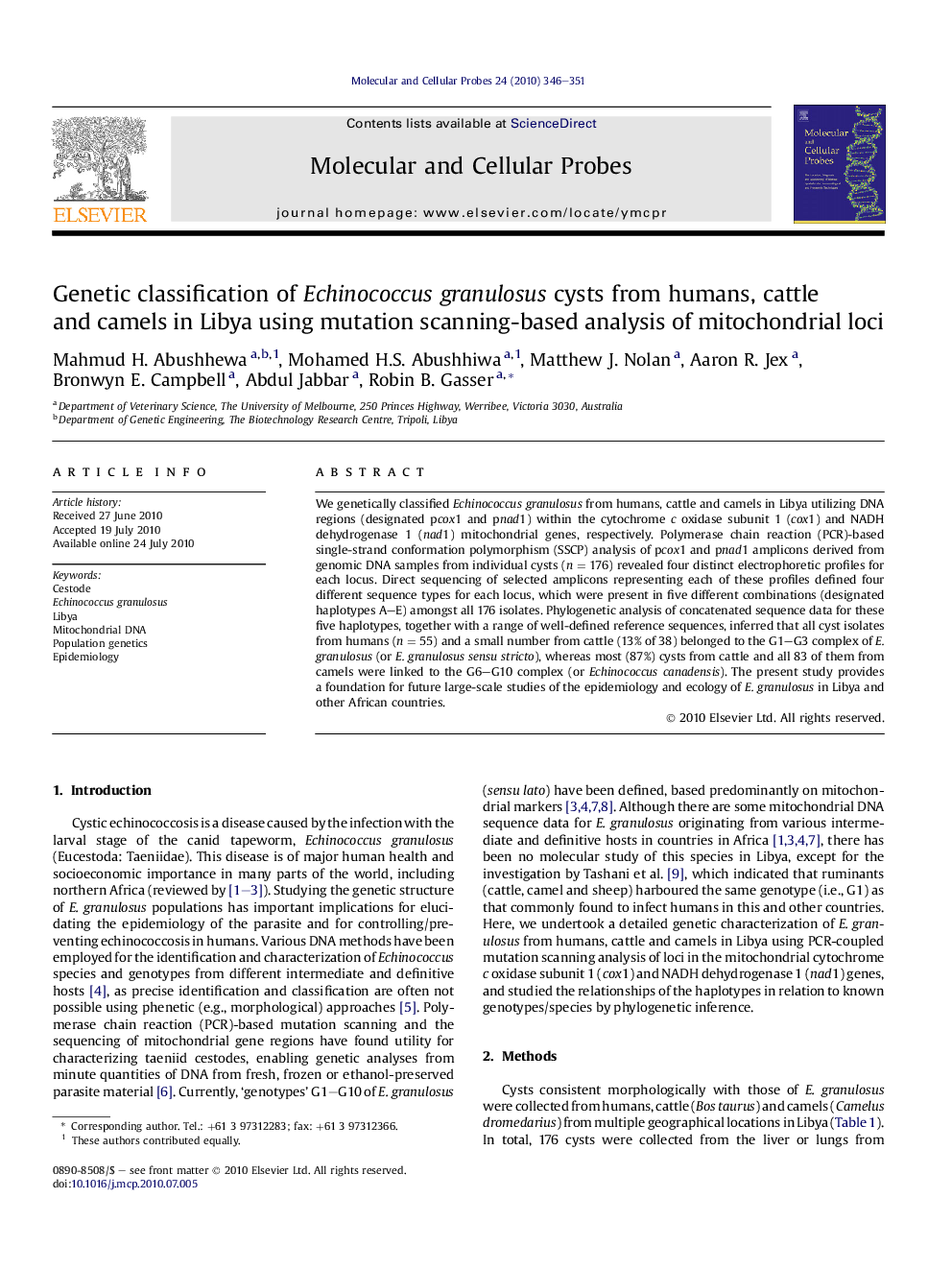| Article ID | Journal | Published Year | Pages | File Type |
|---|---|---|---|---|
| 2199893 | Molecular and Cellular Probes | 2010 | 6 Pages |
We genetically classified Echinococcus granulosus from humans, cattle and camels in Libya utilizing DNA regions (designated pcox1 and pnad1) within the cytochrome c oxidase subunit 1 (cox1) and NADH dehydrogenase 1 (nad1) mitochondrial genes, respectively. Polymerase chain reaction (PCR)-based single-strand conformation polymorphism (SSCP) analysis of pcox1 and pnad1 amplicons derived from genomic DNA samples from individual cysts (n = 176) revealed four distinct electrophoretic profiles for each locus. Direct sequencing of selected amplicons representing each of these profiles defined four different sequence types for each locus, which were present in five different combinations (designated haplotypes A–E) amongst all 176 isolates. Phylogenetic analysis of concatenated sequence data for these five haplotypes, together with a range of well-defined reference sequences, inferred that all cyst isolates from humans (n = 55) and a small number from cattle (13% of 38) belonged to the G1–G3 complex of E. granulosus (or E. granulosus sensu stricto), whereas most (87%) cysts from cattle and all 83 of them from camels were linked to the G6–G10 complex (or Echinococcus canadensis). The present study provides a foundation for future large-scale studies of the epidemiology and ecology of E. granulosus in Libya and other African countries.
